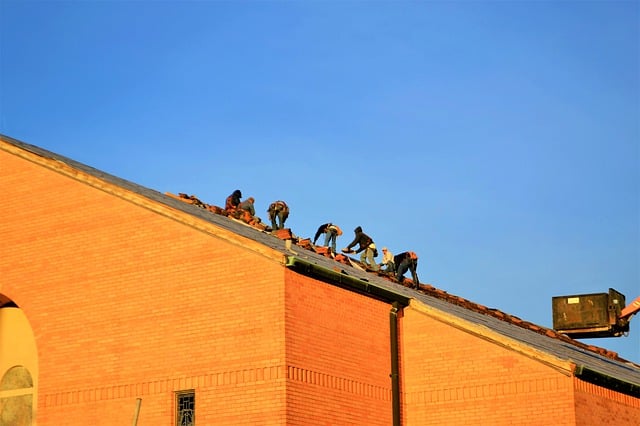Your home must be safe and secure if you want to ensure the welfare of your family. As a new homeowner or someone who has been in the same location for many years, minor improvements can go a long way in terms of feeling secure and comfortable. Whether it is avoiding accidents, scaring away intruders, or simply making a place where you can really relax, the proper improvements will make it happen.
In this article, we’ll look at five essential home upgrades that not only boost your safety but also offer peace of mind. These modifications are functional, efficient, and worthwhile to consider in making your residence a safer place to stay.
Essential Home Upgrades to Improve Safety and Peace of Mind
Here are five essential home upgrades that will improve your safety and peace of mind:
1. Upgrade to Smart Smoke and Carbon Monoxide Detectors
Conventional smoke alarms are necessary, but they tend to be inadequate with regard to prompt warnings or identification of more sophisticated hazards like carbon monoxide (CO). The decision to upgrade to a dual-purpose device that identifies both smoke and CO can be a life-saving decision.
Smart detectors not only sound alarms in the event of a hazard but also send real-time alerts to your smartphone, allowing you to respond quickly even when you’re away from home. One notable option is the X-Sense SC07-MR interconnected smoke and CO detector. This device offers wireless interconnection with up to 24 units, ensuring that if one alarm goes off, they all do. This feature is especially important for multi-level homes or larger households where immediate notification can make all the difference. Other than that, by instantly alerting you to the presence of smoke or carbon monoxide, the X-Sense SC07-MR helps reduce response time, potentially saving lives and minimizing property damage. This X-Sense product’s reliable performance and seamless connectivity make it a smart choice for families who prioritize safety and want round-the-clock protection, whether they are home or away.
2. Install Reinforced Entry Doors and Deadbolt Locks
The first line of defense for your home is its entry points. Sadly, most of the standard doors and locks are easy to break. Replacing the doors with reinforced steel or solid wood doors with heavy-duty deadbolt locks will make forced entry much more difficult.
To ensure even greater security, seek out ANSI Grade 1 locks, which have the best security rating for residential locks. Smart locks that do not require keys are also becoming increasingly popular, including the ability to assign temporary access codes to guests, lock/unlock remotely, and receive real-time notifications when a person enters or leaves the house.
Although the initial outlay can be more than normal locks, the extra security and convenience make this a prudent long-term investment for any homeowner who values security.
3. Improve Outdoor Lighting and Motion Sensors
Enhancing outdoor lighting and incorporating motion sensors is a highly effective way to improve home security. Intruders are far less likely to approach a property that is well-lit and appears actively maintained. Focus on installing lighting around key areas such as entrances, garages, pathways, and dark corners. Not only does this improve safety and visibility, but it also adds to your home’s overall curb appeal.
Motion-activated lights are especially useful, as they immediately spotlight any movement, deterring potential intruders. Energy-efficient LED floodlights and solar-powered models offer bright illumination with minimal energy costs and simple installation.
For a comprehensive safety upgrade, consider pairing your lighting setup with a smoke and carbon monoxide detector. Together, these devices not only protect against break-ins but also provide early warnings for fire and gas-related emergencies, ensuring a safer living environment.
4. Add a Smart Security System
A modern home security system provides more than just alarms; it offers real-time monitoring, instant notifications, and even emergency service dispatch. Today’s smart systems are customizable and can be integrated with other home devices, including lights, cameras, and door locks.
Many systems also allow homeowners to monitor their property remotely through a smartphone app, which is particularly useful when traveling or leaving kids home alone. Some plans offer 24/7 professional monitoring, while others allow self-monitoring with no monthly fees.
When choosing a system, consider your home’s size, layout, and whether you want wired or wireless installation. Even a basic system with door/window sensors and an indoor camera can go a long way toward improving home safety.
5. Secure Windows with Locks, Bars, or Sensors
Windows are often seen as a secondary point of entry, but they can be just as vulnerable especially on the ground floor or in basements. Reinforcing them with high-quality locks or safety bars can deter potential break-ins.
For a less obtrusive option, window sensors that trigger an alert when glass is broken or a window is opened can be installed. These sensors can be integrated into your broader smart security system for centralized control.
You may also want to consider adding impact-resistant or laminated safety glass, which holds together even when shattered, making it harder for intruders to gain entry quickly.
Conclusion
Safety isn’t just about installing a few gadgets, it’s about creating a thoughtful system that protects your family and property from multiple angles.
The key is to think proactively rather than reactively. Prioritizing safety now means fewer emergencies later and that peace of mind is something every homeowner deserves.




